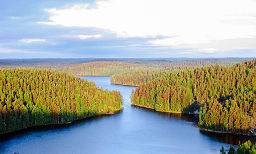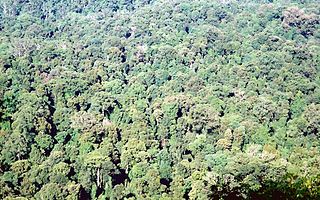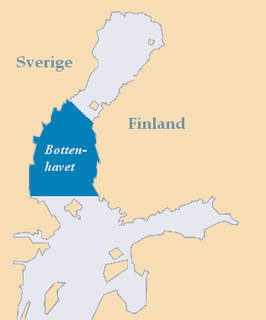| Repovesi National Park(Repoveden kansallispuisto) | |
| Protected area | |
A summer night at Repovesi | |
| Country | Finland |
|---|---|
| Region | Kymenlaakso, Southern Savonia |
| Location | Kouvola, Mäntyharju |
| - coordinates | 61°11′N026°53′E / 61.183°N 26.883°E Coordinates: 61°11′N026°53′E / 61.183°N 26.883°E |
| Area | 15 km2 (6 sq mi) |
| Established | 2003 |
| Management | Metsähallitus |
| Visitation | 74,500 (2009 [1] ) |
| IUCN category | II - National Park |
| Website: www | |
Repovesi National Park (Finnish : Repoveden kansallispuisto) is situated in the municipalities of Kouvola and Mäntyharju, only a few hours north-east of the more populous Helsinki area of southern Finland. Formerly a site for intensive commercial forestry, the Repovesi area successfully transformed into a pristine national park. Pine and birch trees dominate the park. Repovesi abounds with wildlife including bear, deer and various birds. The River Koukunjoki flows through the park. Other streams and lakes are also situated within the parks boundaries.

Finnish is a Finnic language spoken by the majority of the population in Finland and by ethnic Finns outside Finland. Finnish is one of the two official languages of Finland ; Finnish is also an official minority language in Sweden. In Sweden, both Standard Finnish and Meänkieli, a Finnish dialect, are spoken. The Kven language, a dialect of Finnish, is spoken in Northern Norway by a minority group of Finnish descent.

Kouvola is a city and municipality in southeastern Finland. It is located on the Kymijoki River in the region of Kymenlaakso and 134 kilometres (83 mi) northeast of the capital, Helsinki.

Mäntyharju is a municipality of Finland.
Contents

Attractions include the Olhavanvuori hill, popular among climbers, and the Kultareitti water taxi route. Also located in the park are the Kuutinlahti bay with its restored timber rafting channels, the Lapinsalmi suspension bridge, and many observation towers.

A water taxi or a water bus, also known as a sightseeing boat, is a watercraft used to provide public or private transport, usually, but not always, in an urban environment. Service may be scheduled with multiple stops, operating in a similar manner to a bus, or on demand to many locations, operating in a similar manner to a taxi. A boat service shuttling between two points would normally be described as a ferry rather than a water bus or taxi.

Timber rafting is a log transportation method in which logs are tied together into rafts and drifted or pulled across a water body or down a river. It is arguably the second cheapest method of transportation of timber, next after log driving. Both methods may be referred to as timber floating.

An observation tower is a structure used to view events from a long distance and to create a full 360 degree range of vision to conduct the long distance observations. They are usually at least 20 metres (66 ft) tall and made from stone, iron, and wood. Many modern towers are also used as TV towers, restaurants, or churches. The towers first appeared in Germany at the end of the 18th century, and their numbers steadily increased, especially after the invention of the lift.
The common fauna of the park includes the red-throated diver, the Eurasian lynx, the moose, many owls and several galliformes.

The Eurasian lynx is a medium-sized wild cat occurring from Northern, Central and Eastern Europe to Central Asia and Siberia, the Tibetan Plateau and the Himalayas. It inhabits temperate and boreal forests up to an altitude of 5,500 m (18,000 ft). Because of its wide distribution, it has been listed as Least Concern on the IUCN Red List since 2008. It is threatened by habitat loss and fragmentation, poaching and depletion of prey. The European lynx population is estimated at comprising maximum 10,000 individuals and is considered stable.

The moose or elk (Eurasia), Alces alces is a member of the New World deer subfamily and is the largest and heaviest extant species in the Deer family. Moose are distinguished by the broad, palmate antlers of the males; other members of the deer family have antlers with a dendritic ("twig-like") configuration. Moose typically inhabit boreal forests and temperate broadleaf and mixed forests of the Northern Hemisphere in temperate to subarctic climates. Hunting and other human activities have caused a reduction in the size of the moose's range over time. Moose have been reintroduced to some of their former habitats. Currently, most moose are found in Canada, Alaska, New England, Fennoscandia, Baltic states, and Russia. Their diet consists of both terrestrial and aquatic vegetation. The most common moose predators are the gray wolf along with bears and humans. Unlike most other deer species, moose do not form herds and are solitary animals, aside from calves who remain with their mother until the cow begins estrus, at which point the cow chases away young bulls. Although generally slow-moving and sedentary, moose can become aggressive and move quickly if angered or startled. Their mating season in the autumn features energetic fights between males competing for a female.

Owls are birds from the order Strigiformes, which includes about 200 species of mostly solitary and nocturnal birds of prey typified by an upright stance, a large, broad head, binocular vision, binaural hearing, sharp talons, and feathers adapted for silent flight. Exceptions include the diurnal northern hawk-owl and the gregarious burrowing owl.


















